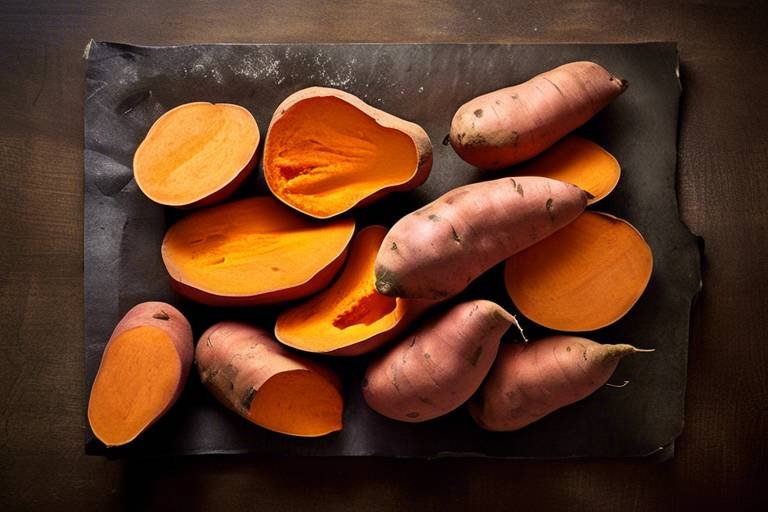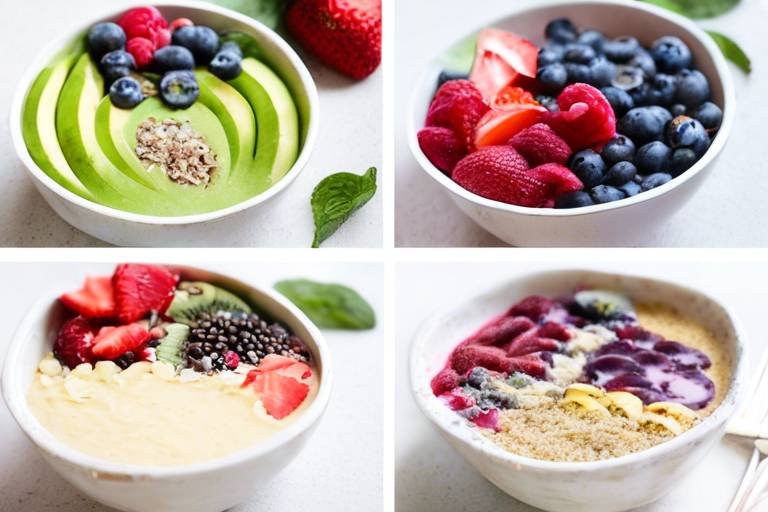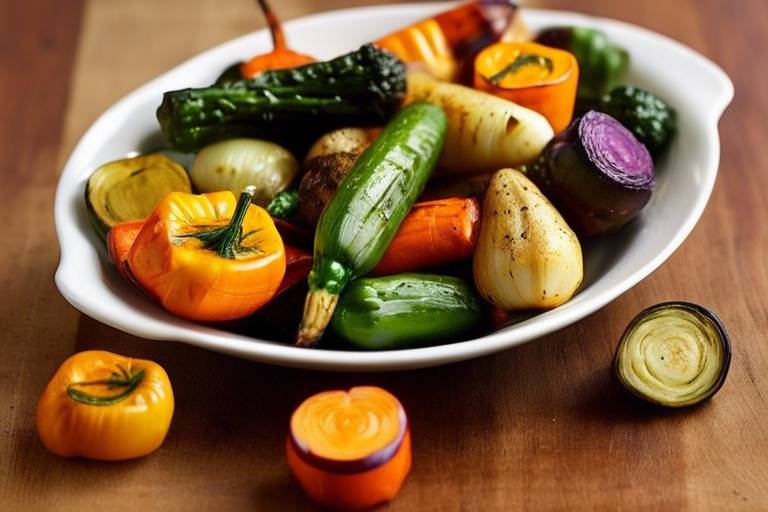How to Make Your Own Homemade Salad Dressings
Making your own homemade salad dressings is a rewarding and simple way to elevate your salads to a whole new level. By using fresh and wholesome ingredients, you can create delicious dressings that are free from additives and preservatives commonly found in store-bought options. Let's explore the art of crafting your own flavorful dressings right in your kitchen.

Benefits of Homemade Dressings
Making your own salad dressings at home comes with a plethora of benefits that go beyond just the satisfaction of creating something delicious from scratch. One of the primary advantages is the use of fresher ingredients compared to store-bought dressings. When you make your own dressings, you have full control over the quality of each component, ensuring that only the best and healthiest ingredients go into your salad.
Another significant benefit of homemade dressings is the ability to customize flavors according to your preferences. You can experiment with different combinations of oils, acids, herbs, and spices to create unique and personalized dressings that cater to your taste buds. This customization allows you to tailor the dressing to complement the specific ingredients in your salad, elevating the overall flavor profile.
Furthermore, by making your own dressings, you can steer clear of additives and preservatives commonly found in commercial salad dressings. This means you can enjoy a cleaner, healthier dressing without compromising on taste. Additionally, creating homemade dressings can be a cost-effective choice in the long run, as you can make larger quantities at a fraction of the price of store-bought alternatives.
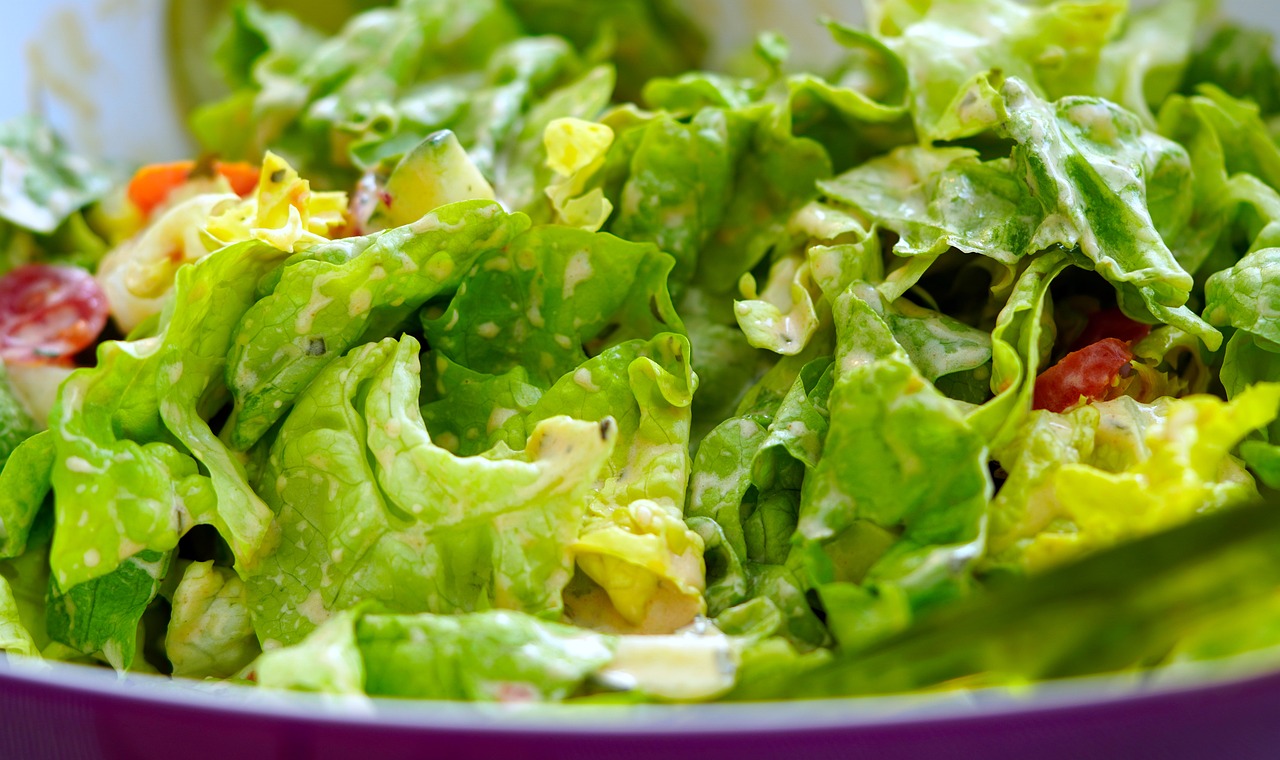
Essential Ingredients for Homemade Dressings
Learn how to create delicious and healthy salad dressings at home with simple ingredients. Elevate your salads with unique flavors and avoid store-bought additives and preservatives.
Discover the advantages of making your own salad dressings, including fresher ingredients, customizable flavors, and the ability to control the quality and quantity of each component.
When it comes to crafting homemade dressings, certain key ingredients play a crucial role in creating flavorful and well-balanced concoctions. These essential components form the foundation of a delicious dressing that can transform a simple salad into a culinary delight.
First and foremost, oils serve as the base of most salad dressings, providing richness and mouthfeel. Common options include olive oil, avocado oil, and sesame oil, each offering distinct flavors that can complement various salad ingredients. Choosing the right oil can significantly impact the overall taste of your dressing.
Acids, such as vinegar, citrus juices, or yogurt, add brightness and tanginess to dressings, balancing out the richness of oils and enhancing the flavors of the salad ingredients. Finding the perfect balance between acidity and other elements is key to creating a harmonious dressing.
Sweeteners like honey, maple syrup, or agave syrup can help mellow out the acidity in dressings and provide a touch of sweetness. These ingredients can also add depth and complexity to the flavor profile, creating a well-rounded dressing that tantalizes the taste buds.
Herbs, spices, and aromatics are essential for infusing dressings with distinctive flavors and aromas. Whether using fresh herbs like basil and cilantro, aromatic spices such as cumin and paprika, or pungent ingredients like garlic and shallots, these additions elevate the dressing to new heights of deliciousness.
Emulsifiers like mustard or egg yolk help bind the oil and acidic components together, creating a smooth and creamy texture. Mastering emulsification techniques is crucial for achieving the desired consistency and ensuring that all ingredients are well incorporated.
Master the art of emulsifying ingredients to create creamy and well-blended dressings, including methods like whisking, shaking in a jar, using a blender, or incorporating a stabilizer like egg yolk.
Learn how to properly store homemade salad dressings to maintain freshness and flavor, including refrigeration guidelines, shelf life expectations, and tips for reviving separated dressings.
Explore a variety of creative and easy-to-follow recipes for homemade salad dressings, from classic vinaigrettes to creamy ranch, honey mustard, tahini, and fruit-infused options.
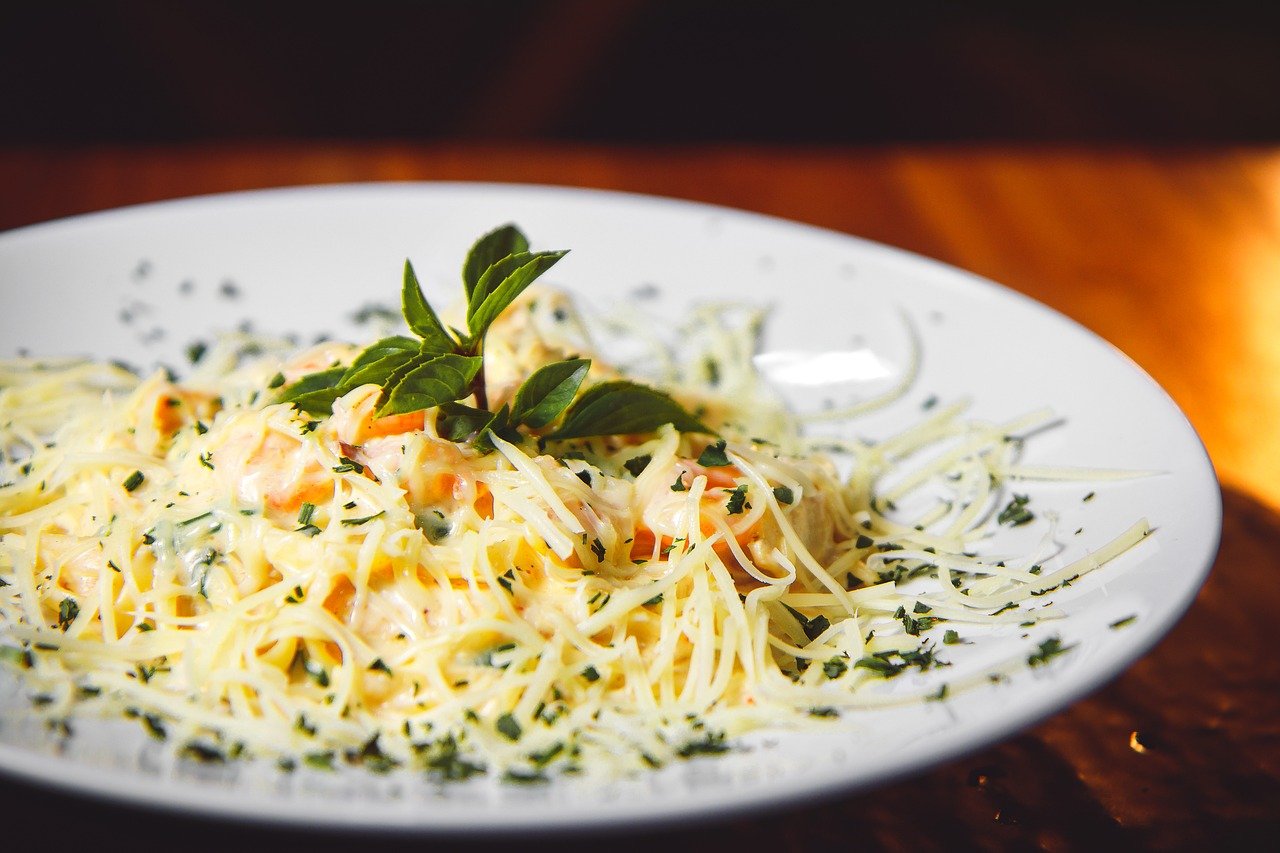
Oil Selection and Flavor Profiles
When it comes to creating homemade salad dressings, one of the key elements to consider is the selection of the right oil. Different types of oils offer distinct flavor profiles that can greatly impact the overall taste of your dressing. Whether you prefer a light and neutral oil like grapeseed or a more robust option such as extra virgin olive oil, the choice of oil can elevate your dressing to a whole new level.
Each oil brings its unique characteristics to the table, from the delicate notes of avocado oil to the nutty richness of walnut oil. Consider the ingredients in your salad and the flavor profile you wish to achieve when selecting the oil for your dressing. For example, a fruity olive oil might pair perfectly with a citrus-based dressing, while a sesame oil could add depth to an Asian-inspired vinaigrette.
Experimenting with different oils can open up a world of possibilities, allowing you to customize your dressings to suit your preferences. Mixing oils can also create a more complex flavor profile, adding depth and richness to your homemade creations. By understanding the flavor profiles of various oils, you can tailor your dressings to perfectly complement your favorite salads.
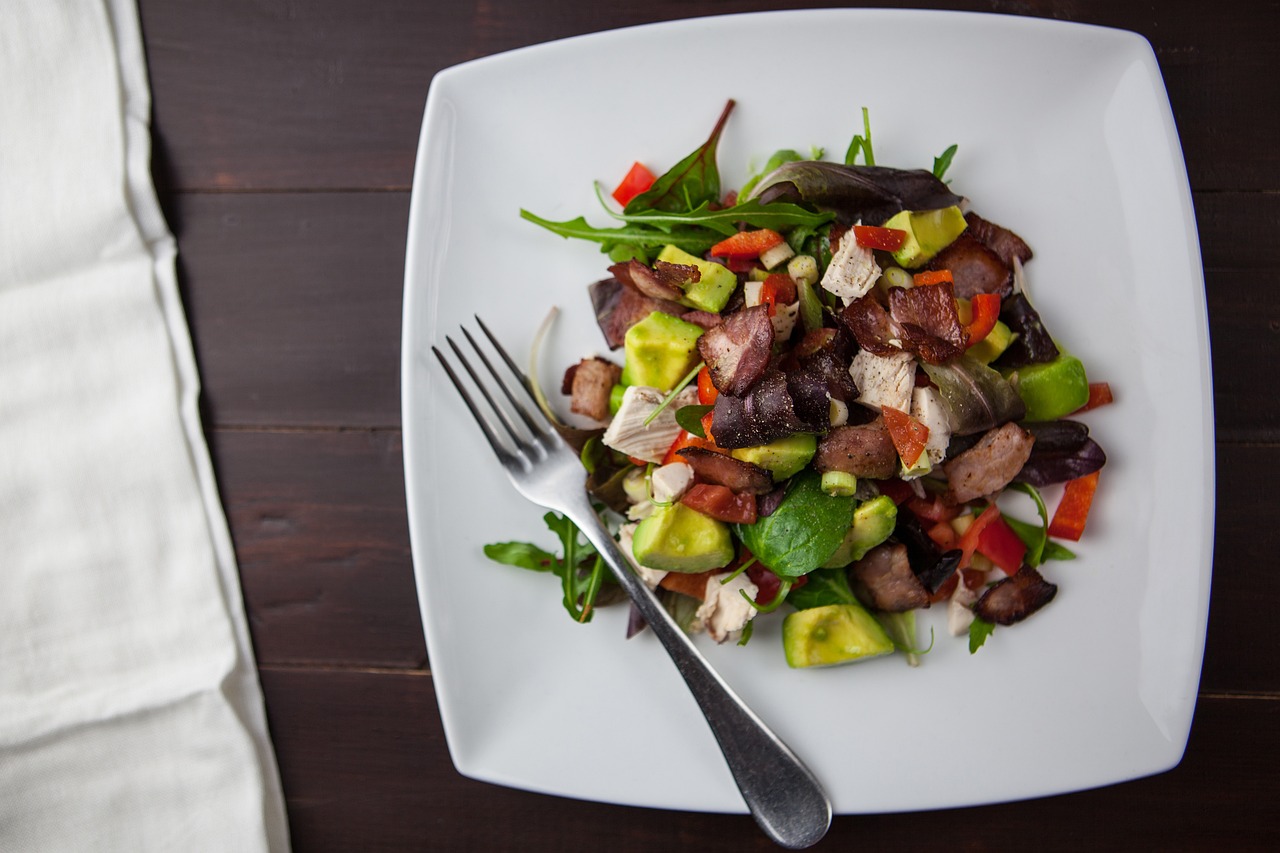
Acidic Components and Balancing Flavors
When it comes to creating homemade salad dressings, understanding the role of acidic components is crucial in achieving a well-balanced flavor profile. Acids such as vinegar, citrus juices, and yogurt not only provide a tangy taste but also help in balancing the overall flavors of the dressing. By incorporating acidic ingredients, you can enhance the brightness of the dressing while cutting through the richness of oils and other components.
When working with acidic components, it's essential to strike a harmonious balance between acidity, sweetness, saltiness, and other flavor elements. This balance is key to creating a dressing that is neither too sharp nor too flat in taste. Experimenting with different ratios of acids to other ingredients allows you to tailor the dressing to your preference, whether you enjoy a more tangy or mellow flavor profile.
Moreover, acidic components play a crucial role in not only flavor enhancement but also in food safety. The acidity in ingredients like vinegar acts as a natural preservative, helping to extend the shelf life of your homemade dressings. This means you can enjoy your creations for longer periods without compromising on taste or quality.
By mastering the art of balancing acidic components with other flavors in your homemade dressings, you can elevate the taste of your salads and create culinary delights that are both healthy and delicious.
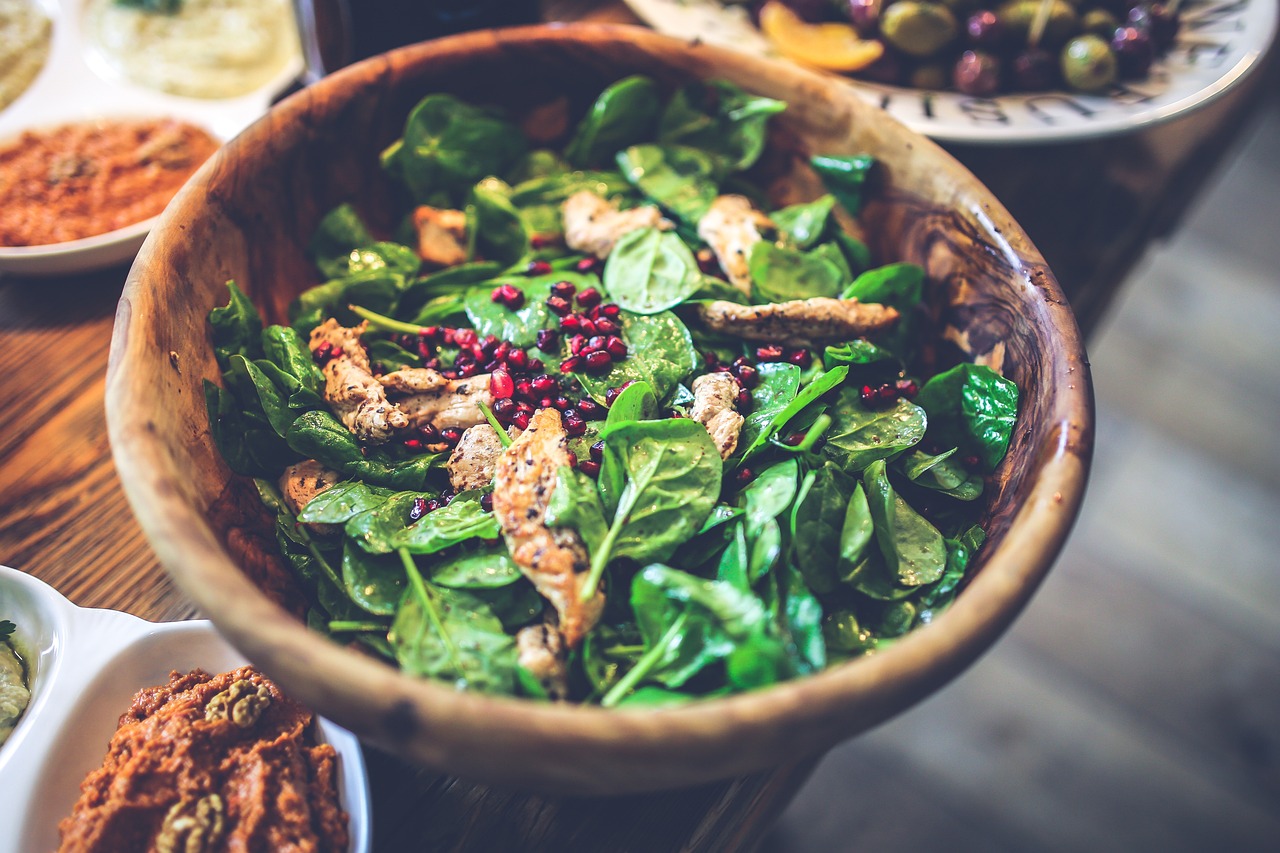
Herbs, Spices, and Aromatics
When it comes to creating flavorful and aromatic homemade salad dressings, herbs, spices, and aromatics play a crucial role in elevating the taste profile of your dishes. These ingredients not only add depth and complexity but also bring a unique twist to your dressings that store-bought options often lack.
Herbs are a fantastic way to infuse freshness into your dressings. Whether you opt for classics like basil, parsley, and cilantro or experiment with more exotic choices like tarragon or dill, herbs can provide a burst of flavor that brightens up your salads. Consider using fresh herbs for a vibrant taste or dried herbs for a more concentrated and earthy flavor.
Spices are another essential component that can take your homemade dressings to the next level. From warming spices like cumin and paprika to fragrant options like cinnamon and nutmeg, the possibilities are endless. Experiment with different spice combinations to create unique flavor profiles that suit your preferences.
Aromatics such as garlic, shallots, and onions add depth and complexity to your dressings. Whether you prefer the sharp bite of raw garlic or the mellow sweetness of caramelized onions, aromatics can enhance the overall taste of your dressings. Consider sautéing aromatics before incorporating them into your dressings to release their full flavor potential.
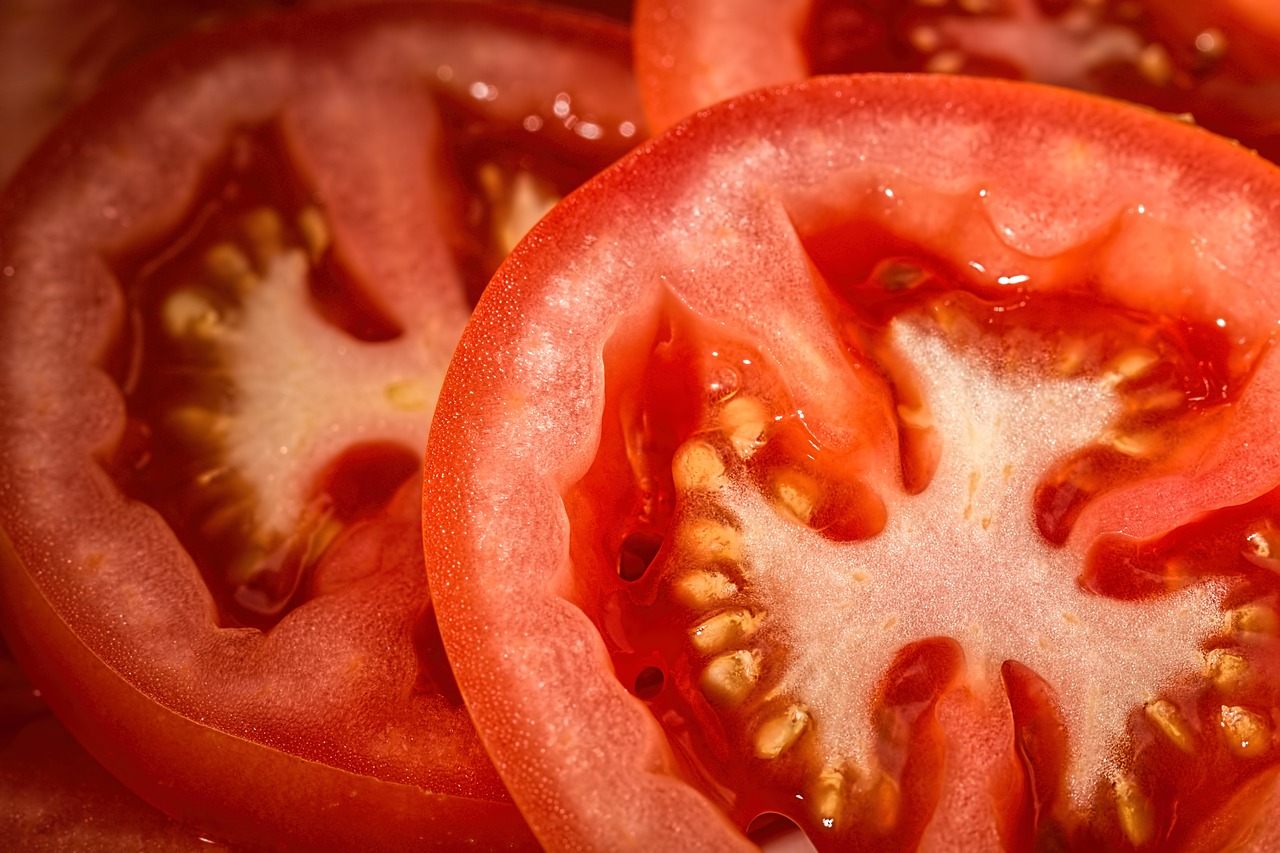
Emulsification Techniques
Emulsification techniques are essential for creating creamy and well-blended salad dressings that hold together harmoniously. One common method is whisking, which involves slowly incorporating the oil into the acidic component while continuously stirring to form a stable emulsion. Another popular technique is shaking the ingredients in a jar, allowing the vigorous motion to blend the oil and acid effectively. For a more efficient approach, using a blender can quickly emulsify the ingredients to achieve a smooth texture. Additionally, incorporating a stabilizer like egg yolk can help maintain the emulsification over time, ensuring a consistent dressing consistency.
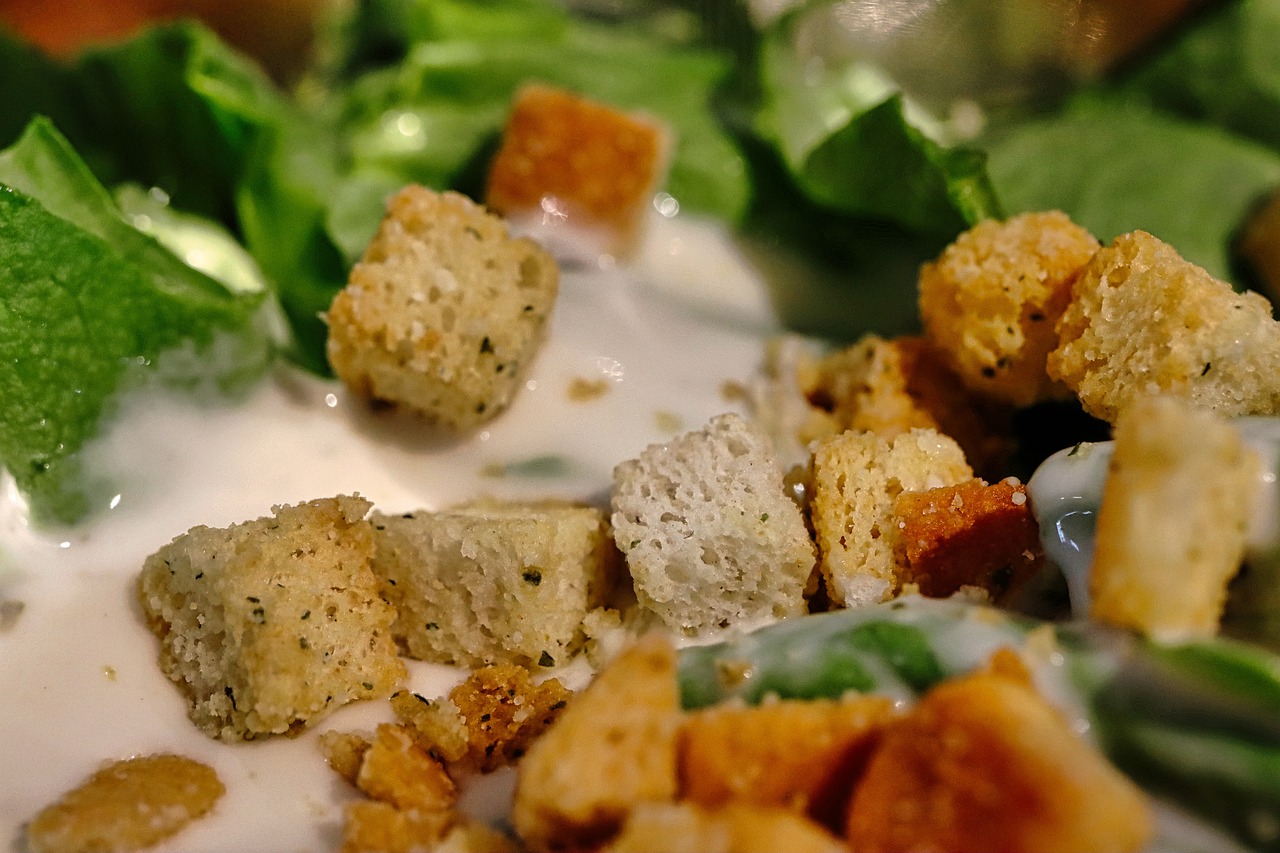
Storage and Shelf Life Tips
When it comes to homemade salad dressings, proper storage is key to maintaining their freshness and flavor. To ensure your dressings last as long as possible, it's essential to follow some simple tips and guidelines.
First and foremost, homemade salad dressings should be stored in airtight containers to prevent exposure to air, which can cause them to spoil more quickly. Mason jars or glass bottles with tight-fitting lids are ideal for this purpose.
Refrigeration is another crucial aspect of preserving homemade dressings. Most homemade dressings contain perishable ingredients like fresh herbs, garlic, or dairy products, so storing them in the refrigerator is a must. Make sure to place your dressings in the coldest part of the fridge to maintain their quality.
It's also important to check the shelf life of the ingredients used in your dressings. Ingredients like fresh herbs or dairy products can affect the overall shelf life of your dressing. Always use the freshest ingredients possible and be mindful of expiration dates.
If you notice that your dressing has separated or solidified in the fridge, don't panic. Simply take it out and let it sit at room temperature for a few minutes, then give it a good shake or stir to re-emulsify the ingredients.
When in doubt, use your senses to determine if a dressing is still good to use. Check for any unusual odors, off colors, or signs of mold. If in doubt, it's best to err on the side of caution and discard the dressing.
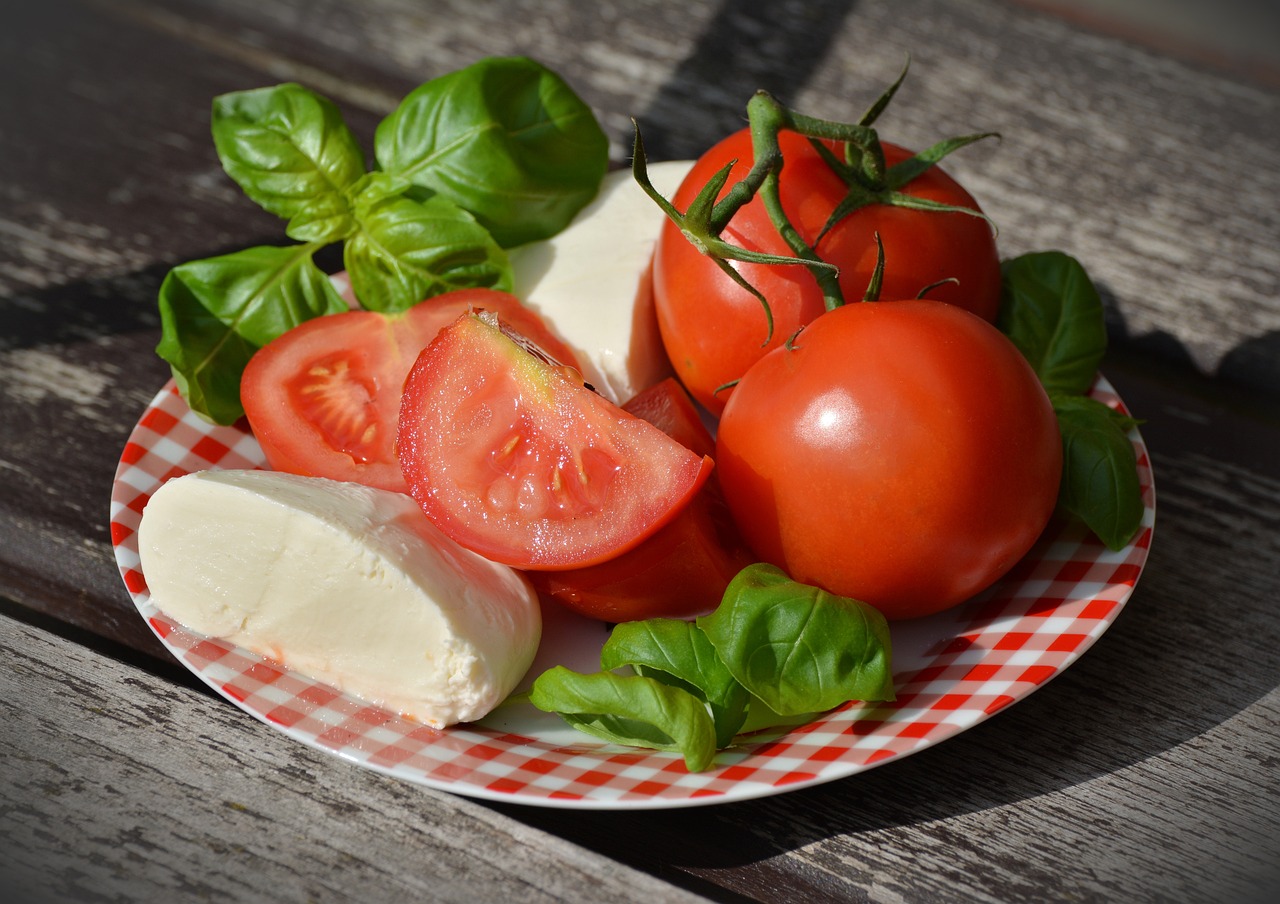
Creative Salad Dressing Recipes
Are you tired of the same old store-bought salad dressings and looking to add a creative twist to your salads? Look no further! Here are some delightful and easy-to-follow recipes for homemade salad dressings that will elevate your salads to a whole new level of deliciousness.
Let's start with a classic Balsamic Vinaigrette: This timeless dressing combines the tangy flavor of balsamic vinegar with the richness of olive oil, a hint of Dijon mustard, and a touch of honey for sweetness. It's perfect for drizzling over mixed greens or roasted vegetables.
For a creamy option, try making your own Ranch Dressing: Blend together mayonnaise, sour cream, buttermilk, and a mix of herbs and spices like dill, garlic powder, and onion powder. This versatile dressing is great for dipping veggies or dressing up a hearty Cobb salad.
If you're a fan of sweet and tangy flavors, whip up a Honey Mustard Dressing: Combine honey, Dijon mustard, apple cider vinegar, and a splash of lemon juice for a zesty dressing that pairs perfectly with grilled chicken or a crispy chicken salad.
For a unique and nutty option, try making a Tahini Dressing: Mix tahini paste with lemon juice, garlic, and a touch of cumin for a creamy and flavorful dressing that's ideal for drizzling over grain bowls or roasted vegetable salads.
Feeling adventurous? Experiment with Fruit-Infused Dressings: Blend fresh berries, mango, or citrus fruits with olive oil, vinegar, and a touch of honey for a refreshing and fruity dressing that adds a burst of flavor to your summer salads.
These creative salad dressing recipes are just the beginning! Don't be afraid to mix and match ingredients, adjust seasonings to your taste, and let your culinary imagination run wild. Homemade dressings not only taste better but also allow you to customize your salads to suit your preferences perfectly.
Frequently Asked Questions
- Can I customize the flavors of homemade salad dressings?
Absolutely! One of the greatest advantages of making your own salad dressings is the ability to customize the flavors to suit your preferences. You can experiment with different oils, acids, herbs, spices, and sweeteners to create unique and delicious combinations.
- How long can homemade salad dressings be stored?
The shelf life of homemade salad dressings can vary depending on the ingredients used. In general, dressings with dairy or fresh ingredients should be consumed within a week, while vinaigrettes and oil-based dressings can last up to a month when stored properly in the refrigerator.
- What are some emulsification techniques for homemade dressings?
There are several methods to emulsify ingredients in salad dressings, such as whisking vigorously, shaking in a jar, using a blender, or adding a stabilizer like egg yolk. Each technique helps blend the oil and acidic components together for a creamy and well-balanced dressing.
- Are homemade salad dressings healthier than store-bought options?
Generally, homemade salad dressings are healthier than store-bought varieties as they allow you to control the quality and quantity of ingredients. By using fresh, natural components and avoiding additives and preservatives, you can create nutritious dressings for your salads.
- What are some creative salad dressing recipes to try at home?
There are endless possibilities when it comes to creative salad dressing recipes. From classic vinaigrettes to creamy ranch, honey mustard, tahini, and fruit-infused options, you can explore a wide range of flavors and ingredients to elevate your salads.




